Though spy cameras and mini cameras are ideal for keeping your surveillance on the downlow, there are many ways to keep AlfredCamera out of sight.
Over the years, our users have shared with us their brilliant, sometimes bizarre ways of mounting their devices. We thought we’d share some of our favorite, and most reliable, methods of mounting AlfredCamera that hide your device.
AlfredCamera is available to download for Android and iOS devices.
10 Ways to Hide AlfredCamera
The creativity of our users in mounting, placing, and hiding their devices running AlfredCamera never fails to amuse and amaze us. Learn how to hide your device with these 10 fantastic tips.
1. In plain sight
The great benefit of using an old smartphone as a security device is that it isn’t a camera. That means that in many cases you can ‘hide’ it in plain sight, and most will be none the wiser as to what it’s doing.
Leave it on the side, and it’s simply a phone on the side. Leave it plugged into a wall, and it’s simply a phone put on charge. Sometimes, the most obvious places, like right in front of us, are most inconspicuous.
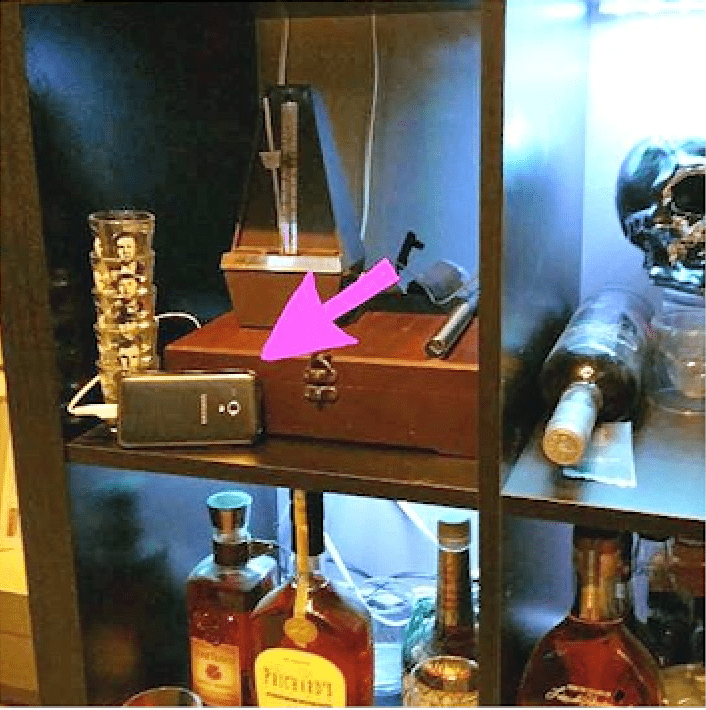
Just make sure it’s not a brand-new iPhone!
2. Among books
A classic hiding spot for all kinds of things is the bookshelf—and sometimes the old school ways work best. Books can be arranged quite haphazardly, and still convincingly conceal a camera.
Try positioning your device on its side and having two books in front of it. Leave a slight gap between the two books for the lens to fit through, and it’ll be safely concealed from afar.
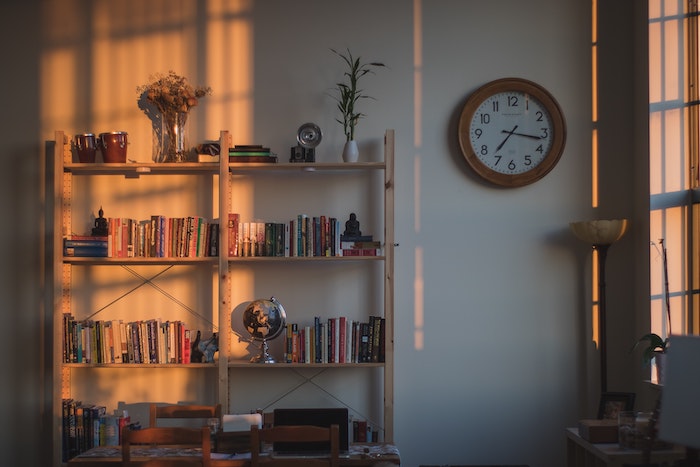
The larger and shadier the bookshelf, the better. Likewise, installing AlfredCamera onto a black colored device will aid in concealing it in dark spaces.
3. Among houseplants
Similar to the bookshelf method, another common item in the home that serves as a great hiding tool is a houseplant. You could take several approaches here.
Fake plants are particularly advantageous, since you can bury the phone in the pebbles or fake soil that it sits in without risking it being water damaged. Bury the device deep enough so that only the top of the camera lens peaks out over the lip of the plant pot.
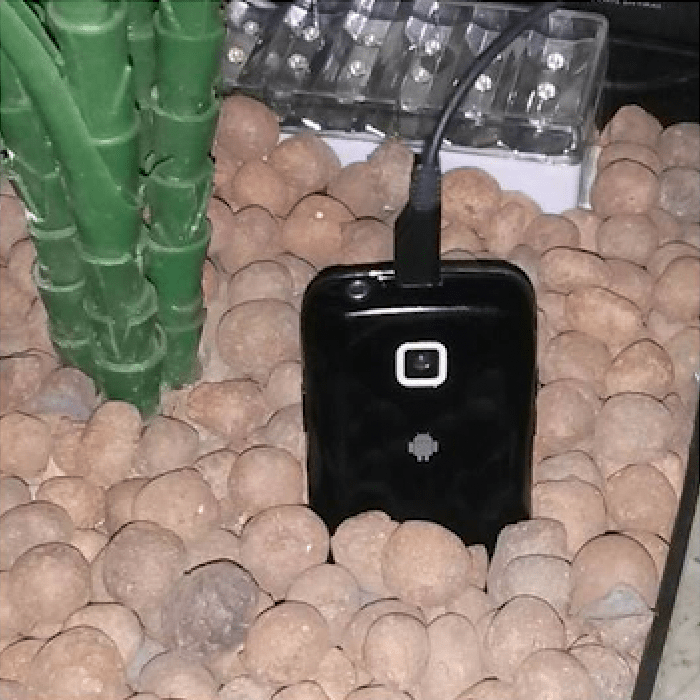
For smaller and lighter devices, you could even try hiding it among large, thick foliage or balanced on branches. We’d recommend using a couple of nylon zip ties or elastic bands, which will fit snugly around the device and whatever it’s pressed against. Style other large and draping plants close to one another.
4. Attached to a peephole
AlfredCamera makes a great alternative to doorbell cameras, which can be costly (and prone to theft since they are outside the property).
Many doors are built with peepholes, fisheye lenses that allow the person on the inside to view the outside, and not vice versa. Try positioning a camera lens up against the glass and it will be able to view what’s outside.

You can be as creative or as simple as you want in terms of mounting the device; a liberal amount of masking tape will be perfectly suitable for attaching to the door, or you could create casing to attach. Wire baskets used to catch mail coming through an in-door letterbox can also be attached higher up on the door, so the device can view the peephole.
5. In makeshift casing
Creating a kind of casing for your device is a solution creative folks will no doubt enjoy sinking their teeth into. We’ve really seen it all, from completely reused plastic packaging to wooden platforms made from scratch.
The great benefit of creating sturdy casing is that it allows you to create something you know will blend in, based on the colors of your décor. It can also be drilled to walls to ‘mount’ the device more easily or fixed to a post to stand upright.

Not to mention, casing can be made from weatherproof materials, so that your device is ready for outside use.
6. Against a window
Another way AlfredCamera can be used for subtle outside monitoring is to position it directly against a window. So long as the lens is pushed firmly against the glass, there shouldn’t be any issues with glare, so make sure that there are no gaps between the back of the device and the windowpane itself.
If the window has a prominent sill, you should have no issues simply balancing the phone on it. Otherwise, use masking tape to attach the device directly to the glass.
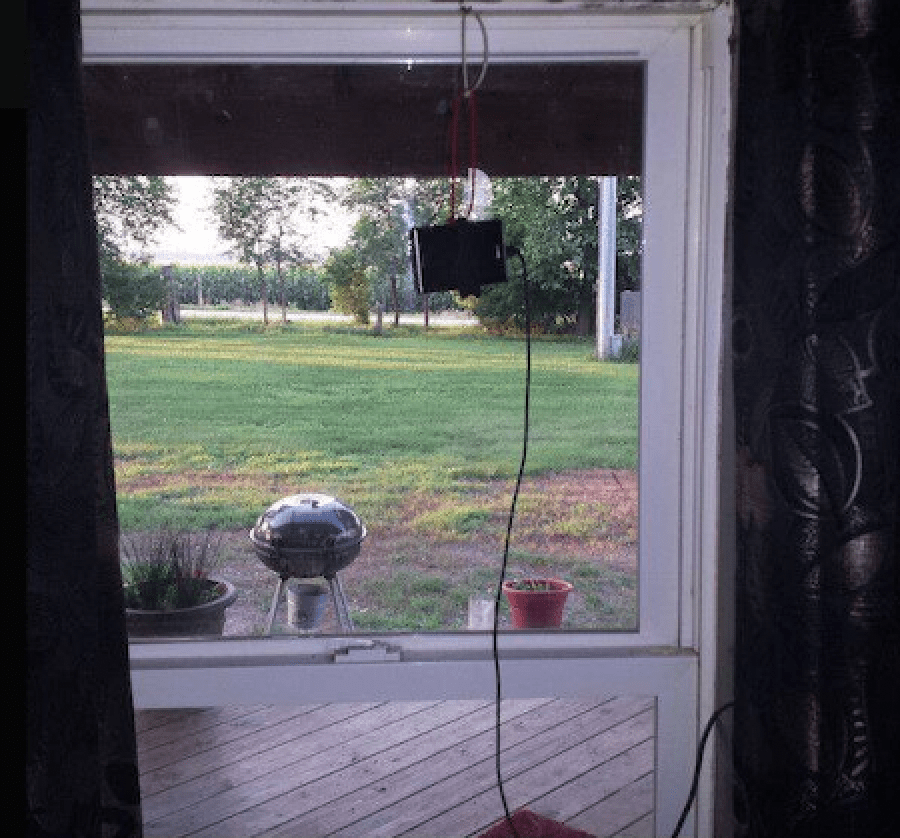
To hide the device better from the outside looking in, tape it to the wall rather than the window, only letting the top part of the lens be visible. It’ll take some trial and error to get it right, but once it is, it’ll be virtually invisible. Add a white phone case to blend in with light linen and net curtains, or black to blend in with thicker blackout curtains and blinds.
7. In a mug
One of our favorite clever ways to support a smartphone that our users regularly deploy is placing it inside an empty mug.
This is especially great for subtle kitchen monitoring, as the device can easily slip into its surroundings among other mugs on shelves or sides.

Ideally, the device will be secure and propped upright with only the lens peaking out over the lip of the mug; experiment with different sizes to get the right balance between subtle and practical.
8. On a curtain rail
Curtain rails might not be your first thought for mounting AlfredCamera, but hear us out. They’re actually one of the better vantage points in the home, and provide ample opportunity to conceal a device.
As a rule of thumb, height is ideal when it comes to any kind of security camera placement. It allows the camera to view as much as possible, and is also conveniently out of reach of thieves and mischief makers.

Don’t rely on precariously balancing your device on the curtain rail pole. Attach it using nylon zip ties, magnets, or clips. Some curtains and blinds, namely pencil pleat curtains, will be easily arranged around the device to hide it without obstructing the lens.
9. In a phone car cradle
Cradles and mounts designed for use in cars are actually rather useful in a number of different environments, including in your home.
Public security cameras can usually be found high up in the corner of a room. Not only is it discreet, but it’s also guaranteed to be the best vantage point in any given space. You can use a phone car cradle to mount AlfredCamera in the same way, attaching the cradle to the side of the wall.
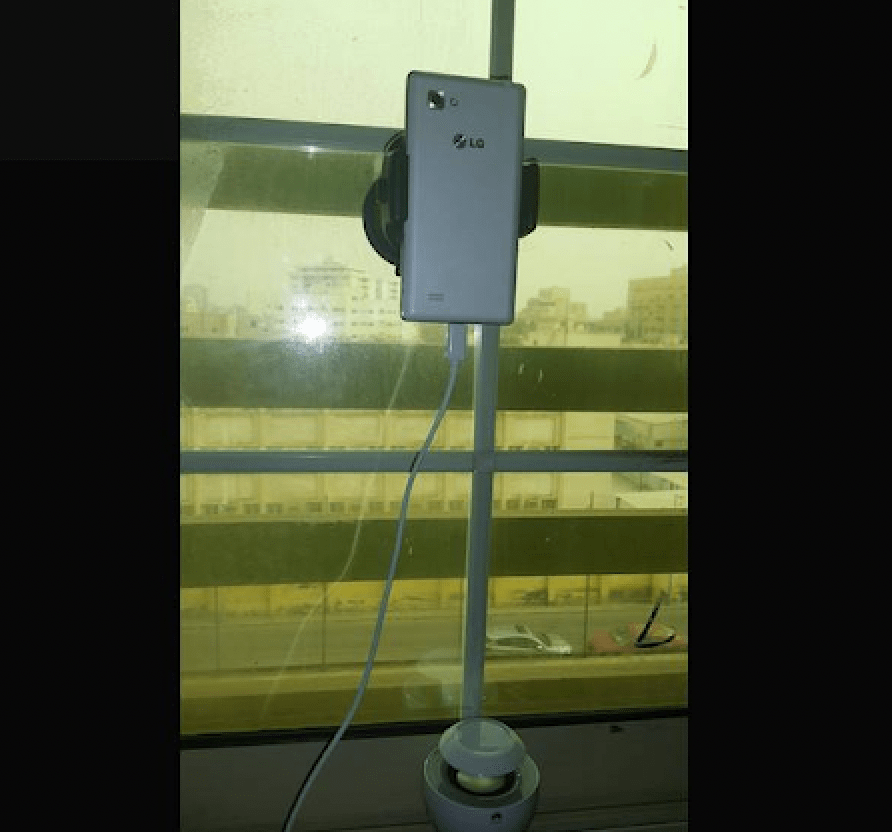
We’d recommend attaching a portable charger to the wall using masking tape so that you don’t have to frequently grab a ladder to get into the corner. Take care when fixing the cradle in high up places.
10. In a picture frame
Some methods will require a little more effort than others, and this is certainly one of them. But it’s pretty much incomparable when it comes to successfully hiding your device.
Measure the diameter of the lens of your device’s camera, and sketch it onto both the back of a photograph or painting that you don’t mind partially destroying and the back of the frame; if the material requires it, drill through the hole.
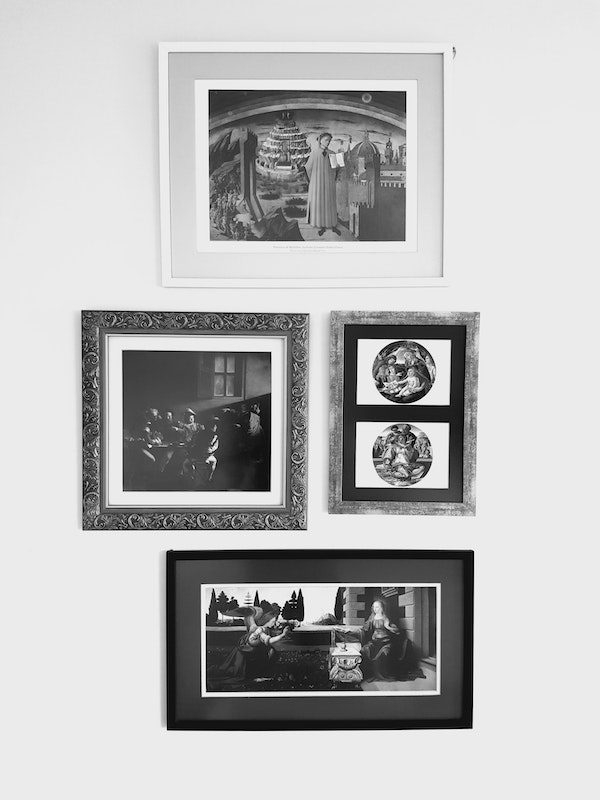
Fix your device to the back of the frame, lining up the camera lens with the hole and attach it using masking tape. Voila: a spy movie style AlfredCamera hidden in a frame!
Is Hiding a Security Camera Illegal?
Hiding a security camera is not illegal in the US and most other territories. That is not, however, express permission to record anything and everyone regardless of consent.
Firstly, audio recording has far tougher laws around it than video. Recording a phone call or an in-person conversation is subject to consent laws; states that follow a ‘two-party consent’ rule, in which both parties to any situation must give permission to be recorded, include California, Connecticut, Florida, Illinois, Maryland, Massachusetts, Montana, New Hampshire, Pennsylvania, Washington, and Hawaii.
The rest follow a ‘one-party consent’ rule, in which at least one party in the situation must consent to being recorded.
In addition, the person recording must also be aware of the privacy laws that exist on both international, state, and federal levels.
As a rule of thumb, there exists a ‘reasonable expectation of privacy’, a concept which originates in US law from the Fourth Amendment; spaces like bedrooms and bathrooms are therefore off-limits to hidden cameras, because a person has a reasonable expectation of privacy in these spaces.
If you record a babysitter in your child’s bedroom without informing them first, you could be in breach of their reasonable expectation of privacy.
Being Responsible
Though laws around hidden surveillance are perhaps less straightforward than one might imagine, it also isn’t hard to gauge what is reasonable and unreasonable to record in and around one’s property. Spaces in which occupants undress, wash, or engage in sexual activity, i.e. bedrooms and bathrooms, should never be recorded without the express consent of the parties occupying the rooms.
At AlfredCamera, privacy is a core tenant of our promise to our users. We take breaches of privacy extremely seriously. If you suspect someone recording you is in breach of your privacy, do not hesitate to contact local authorities. Check out our article on how to find a hidden camera if you suspect you may be being secretly recorded without your consent.
An easy way to stay on the right side of the law is to not bother with recording audio when using hidden surveillance. Public CCTV never records audio—arguably, it’s not especially important in your home either. So, if you are hiding a device, either choose something that doesn’t support audio or turn the audio off in the settings.
Good uses for hidden surveillance include in or around entrance ways, windows, and outside areas, where there is no expectation of privacy. Common areas that see lots of traffic, like living rooms and hallways, may also benefit from inconspicuous surveillance.
Conclusion
Though wrapping your head around the laws might be a little awkward, hidden surveillance has its benefits. It’s a sure-fire way to catch a thief red handed without them even knowing it. With a little ingenuity, AlfredCamera can be hidden easily in and around the home.
We strongly advise turning off audio recording if you are concerned about preaching a person’s expectation of privacy. You’ll likely benefit more from hidden security in less ‘private’ sections of a home anyway, like around doorways, windows, outside and communal areas.
Recommended reading:
AlfredCamera Isn’t Just For Security: 8 Interesting Ways Users Are Using Video Monitoring Revealed
The Buyer’s Guide to Small and Hidden Security Cameras
